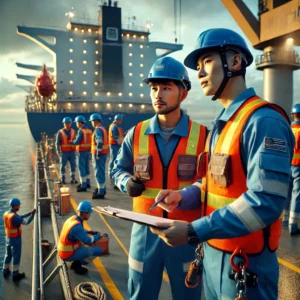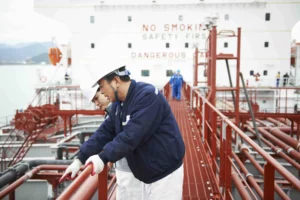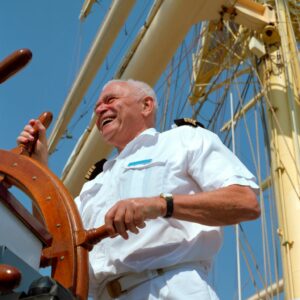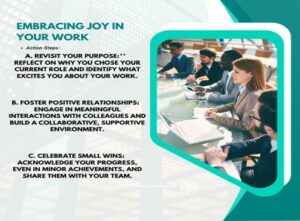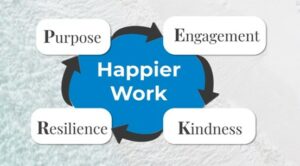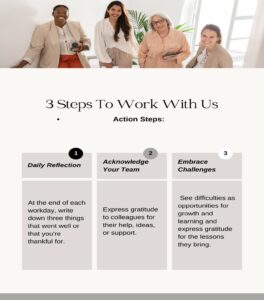Cultural Intelligence: The Maritime Safety Tool Hiding in Plain Sight
The maritime industry loses $541 million annually to incidents caused by cultural misunderstandings among multicultural crews, yet companies implementing cultural intelligence (CQ) programs show 35% better financial performance and 87% superior decision-making outcomes. With 90% of international merchant vessels operating with multicultural crews averaging 3-4 nationalities each, cultural intelligence has evolved from a diversity checkbox into a critical safety and operational competency that Masters and officers can implement immediately through proven frameworks and micro-habits.
The Philippines supplies 29% of global seafarers (550,000), followed by China at 13% (250,000) and India at 10% (190,000) of the 1.89 million total workforce. This unprecedented diversity creates both opportunities and risks – while diverse teams demonstrate a 39% increased likelihood of financial outperformance, research reveals that 34% of maritime accidents can be traced to cultural misunderstandings and communication failures, making cultural intelligence a practical necessity rather than an aspirational goal.
The hidden cost of cultural blindness
Cultural misunderstandings create measurable operational hazards with devastating consequences. The UK P&I Club analysis reveals that 62% of major maritime claims exceeding $100,000 stem from human error, with communication and cultural factors as primary contributors. In the M/V Ernest Hemingway collision case, Filipino crew members misinterpreted Korean fishing vessel behavior patterns, resulting in two fatalities, a sunken vessel, and 600 liters of fuel spilled – a tragic outcome that proper cultural intelligence could have prevented.
The Hamburg grounding incident demonstrates how 45% of contributing factors were communication-related failures between multicultural bridge teams. When a vessel drifted from the centerline during Suez Canal transit, cultural hierarchy prevented junior officers from escalating concerns about hull contact, leading to delayed damage assessment and eventual structural failure during loading operations. These incidents illustrate how cultural dynamics directly impact safety protocols and emergency response effectiveness.
Power distance emerged as the most critical cultural dimension affecting maritime safety. Crew members from high power distance cultures (Filipino, Pakistani, Indian) show reluctance to challenge senior officers even during safety-critical situations. A documented case involved a Myanmar able seaman who recognized the vessel was off course but failed to question a Pakistani officer’s navigation decisions, resulting in a grounding that could have been prevented through effective cultural intelligence application.
Four cultural dimensions that determine operational success
Research identifies specific cultural factors that directly impact maritime operations beyond basic communication barriers. Uncertainty avoidance correlates positively with safety behavior compliance, with high uncertainty avoidance cultures demonstrating better adherence to safety protocols and a systematic approach to risk management. Collectivism versus individualism influences team decision-making effectiveness, with collectivistic cultures showing stronger safety behaviors and crew harmony essential for emergency response coordination.
The distinction between direct and indirect communication styles creates operational friction in multicultural crews. Filipino crew members prefer indirect communication and view criticism as personal attacks, while European officers favor direct feedback for performance improvement. This mismatch leads to misinterpreted instructions, delayed response times, and deteriorated working relationships that compromise safety and efficiency.
Time orientation differences affect critical maritime operations from watch-keeping schedules to emergency response timing. Monochronic cultures prioritize punctuality and sequential task completion, while polychronic cultures focus on relationship-building and flexible scheduling. These differences create coordination challenges during crew changes, maintenance schedules, and time-sensitive operations requiring precise synchronization.
Authority and hierarchy concepts vary dramatically between maritime cultures, influencing bridge resource management effectiveness. Military-style leadership expectations clash with consultative decision-making approaches, while face-saving behaviors can prevent crew members from reporting safety concerns or admitting mistakes during critical operations.
Practical cultural intelligence frameworks for immediate implementation
The Four-Factor Cultural Intelligence Model provides an actionable structure for maritime professionals. CQ Drive (motivational component) involves proactive engagement with diverse crew members during voyage planning and daily operations. Masters can implement this through daily cultural check-ins during watch changes, assessing crew dynamics and potential interaction challenges before they escalate into operational problems.
CQ Knowledge (cognitive component) requires understanding cultural differences in communication patterns, hierarchy expectations, work-rest cycle preferences, and religious observances affecting operational schedules. Practical knowledge areas include national maritime cultures, training backgrounds, religious practices affecting work schedules, and cultural attitudes toward safety and risk tolerance that directly impact decision-making processes.
CQ Strategy (metacognitive component) enables planning for multicultural interactions during bridge resource management, emergency drills, and crew meetings. Masters must develop situational assessment skills for reading cultural dynamics during high-stress situations, adapting leadership approaches based on crew composition and cultural communication preferences.
CQ Action (behavioral component) translates cultural knowledge into adapted communication and leadership styles. Practical skills include adjusting briefing styles for different cultural communication preferences, modifying delegation approaches based on power distance expectations, and adapting conflict resolution techniques to cultural contexts rather than applying universal approaches.
The neutrality imperative in maritime communication
IMO Standard Marine Communication Phrases (SMCP) provide the foundation for cultural neutrality in operational communications. Eight message markers (ADVICE, ANSWER, INFORMATION, INSTRUCTION, INTENTION, QUESTION, REQUEST, WARNING) eliminate cultural interpretation variations and ensure precise understanding across language barriers.
Instead of “Hurry up!” use “INSTRUCTION: Increase work pace.” Replace “That’s wrong” with “INFORMATION: Procedure requires correction.”
Cultural pre-briefing procedures create structured integration processes for multicultural crews. Pre-boarding phase involves providing cultural awareness materials 24-48 hours before embarkation, including nationality-specific communication styles, work ethics, and cultural sensitivities. Onboard familiarization within 72 hours covers religious considerations, dietary requirements, work-rest preferences, and conflict resolution procedures.
Structured buddy systems demonstrate measurable outcomes with 23% higher onboarding satisfaction and 35% reduction in cultural misunderstandings. Selection criteria include experienced crew members from different nationalities with strong English skills and cultural sensitivity training. Implementation requires a minimum of eight interactions during the first 90 days with structured weekly check-ins and cultural bridge activities.
Common flashpoints between maritime cultures
Filipino-European interactions present predictable challenges requiring specific intervention strategies. Filipinos prefer indirect communication versus European direct approaches, view criticism as personal attacks rather than performance improvement, and maintain high power distance expectations, conflicting with European low power distance norms. Solutions include the SOED Feedback Model (Subject → Observation → Effect → Discussion), private rather than public feedback delivery, and 24-hour reflection periods before responses.
Indian-Western cultural differences manifest in communication patterns where head nodding indicates understanding rather than agreement, indirect communication through context and relationships, and different concepts of time and urgency affecting operational coordination. Immediate techniques include confirming understanding with specific questions (“What steps will you take next?”), written confirmation of verbal instructions, and visual demonstrations alongside verbal communication.
High-risk areas include safety procedure compliance (different risk tolerances), work-rest balance expectations, religious/dietary accommodations, personal space and physical contact norms, and decision-making processes (individual versus collective approaches). Masters must recognize these patterns and implement proactive intervention strategies before cultural differences escalate into operational problems.
Daily micro-habits requiring ten minutes maximum
Cultural intelligence develops through consistent daily practices requiring minimal time investment. Morning routine (2 minutes) involves cultural check-ins, asking “How might culture affect today’s tasks?” and reviewing crew nationality composition for potential interaction points. During operations (3 minutes) includes observing non-verbal cues, practicing neutral language by mentally converting instructions to SMCP format, and applying the cultural pause before responding to unexpected behavior.
Evening reflection (5 minutes) involves logging one new cultural insight daily, planning next-day cultural considerations, and reviewing misunderstandings with alternative approaches. The 3-Second Rule creates pause time for asking “Is this personal, professional, or cultural?” before responding to unexpected behavior patterns.
Visual communication support includes conscious use of hand signals and gestures, written backup for complex verbal instructions, and visual job cards with cultural considerations. Team integration activities require minimal resources through multilingual greeting rotation, cultural fact sharing during safety meetings (60 seconds per meeting), and food sharing opportunities during meal breaks.
The innovation dividend of cultural diversity
Research demonstrates that diverse maritime crews generate measurable innovation and problem-solving improvements beyond basic operational requirements. Hafnia’s Maritime Culture Lab achieved 10% female seafarer representation with 25 different nationalities among female crew members, documenting enhanced mutual respect, improved workplace behavior, and innovation in safety protocols and operational procedures.
Meta-analysis of 108 studies involving 10,632 work groups confirms that cultural diversity directly increases creativity – the primary driver of innovation in maritime operations. Diverse crews examine problems at multiple levels, achieving better operational efficiency through varied problem-solving approaches and cultural brokerage where team members leverage diverse knowledge to produce creative solutions.
Companies in the top quartile for diversity demonstrate a 35% higher likelihood of financial outperformance versus industry medians, with diverse companies 70% more likely to capture new markets and 45% more likely to report increased market share year-over-year. These benefits translate directly to maritime operations through enhanced navigation decision-making, improved emergency response, better cargo handling efficiency, and innovation in crew welfare design.
Cultural intelligence versus emotional intelligence in maritime contexts
While emotional intelligence provides foundation skills for self-regulation and basic social competency, cultural intelligence emerges as the stronger predictor of leadership effectiveness in diverse maritime environments. Emotional intelligence proves effective for managing emotions in homogeneous settings but shows limitations in multicultural crews where culturally-driven behaviors may be misinterpreted as emotional states.
Research comparing Southeast Asian and European officers reveals Southeast Asian officers score higher on overall emotional intelligence, particularly in “Utilization of emotions,” “Handling relationships,” and “Self-control.” However, cultural intelligence becomes critical for distinguishing cultural behaviors from individual personality traits and adapting leadership approaches accordingly.
Integration of both competencies produces optimal results, with a high EQ/CQ combination predicting successful adjustment to diverse maritime situations. The development sequence involves establishing the EQ foundation first, then expanding to CQ capabilities through systematic training and practical application in multicultural maritime environments.
Training technologies and immediate resources
Digital platforms provide accessible training solutions for cultural intelligence development. Seably Platform offers flag state-approved STCW courses with maritime English modules incorporating cultural components, mobile app functionality with offline capability, and community-driven marketplace access. Maritime Trainer provides competency management with cultural intelligence modules, SMS-integrated training programs, and real-time progress tracking systems.
Immersive technologies enhance cultural intelligence training effectiveness. Wärtsilä Smart Realities uses VR/AR cultural scenario training with virtual bridge multicultural team simulations and cloud-based access for remote learning. Kongsberg K-Sim Connect provides cultural decision-making simulations, cross-cultural emergency response training, and team coordination exercises in controlled environments.
STCW-compliant training frameworks integrate cultural intelligence into mandatory Bridge Resource Management requirements. Core components include cultural awareness and bias recognition, effective cross-cultural communication, managing cultural diversity in bridge teams, and cultural factors affecting emergency response coordination.
The implementation roadmap for the Masters and officers
Week 1 foundation involves assessing current crew cultural composition, implementing daily cultural check-in routines, establishing buddy system pairings, and beginning SMCP standardization across all operational communications. Week 2-4 development includes conducting cultural pre-briefings for new joiners, implementing weekly cultural integration activities, enrolling crews in digital training platforms, and practicing micro-habit routines consistently.
Month 2-3 optimization requires measuring cultural integration success metrics, adjusting procedures based on crew feedback, developing vessel-specific cultural protocols, and creating cultural competency reference materials for ongoing use. Crisis intervention protocols provide immediate response frameworks within 60 seconds, short-term resolution procedures within 24 hours, and long-term prevention strategies through regular competency refreshers.
Assessment and measurement approaches include qualitative cultural checklists, quantitative CQ assessments adapted for maritime professionals, 360-degree feedback systems, and performance indicators linking cultural intelligence to safety outcomes. These tools provide objective measurement of cultural intelligence development and return on investment for training programs.
Conclusion
Cultural intelligence represents a practical safety and leadership tool that Masters and officers can implement immediately through proven frameworks, daily micro-habits, and structured training approaches. With 90% of merchant vessels operating multicultural crews and $541 million annual losses from cultural misunderstandings, cultural intelligence development offers measurable returns through improved safety, enhanced operational efficiency, and competitive advantages in global maritime markets. The evidence demonstrates that proactive cultural intelligence investment prevents incidents, drives innovation, and positions maritime organizations for sustainable success in an increasingly diverse industry.
Curated By: Strive-High Team
Sources:
- Effects of national culture on human failures in container shipping – https://www.sciencedirect.com/science/article/abs/pii/S0001457512001078
- Cultural differences in emotional intelligence among merchant ship officers – https://pubmed.ncbi.nlm.nih.gov/22972548/
- Managing multicultural maritime human resources – https://www.researchgate.net/publication/301599264
- Communication failures in maritime accidents – https://link.springer.com/article/10.1007/s13437-025-00371-y
- Multicultural work groups research – https://pmc.ncbi.nlm.nih.gov/articles/PMC7812115/
- Management of cultural diversity in European shipping – https://www.researchgate.net/publication/268084419
Industry Reports & Statistics:
- UK P&I Club maritime claims analysis – https://www.nautinst.org/resources-page/just-waiting-to-happen—–the-work-of-the-uk-p-i-club.html
- McKinsey diversity and inclusion impact study – https://www.mckinsey.com/featured-insights/diversity-and-inclusion/diversity-wins-how-inclusion-matters
- Global Maritime Forum diversity momentum – https://globalmaritimeforum.org/insight/diversity-equity-and-inclusion-are-gaining-momentum-in-the-maritime-industry/
- Shipping industry diversity statistics 2025 – https://wifitalents.com/diversity-equity-and-inclusion-in-the-shipping-industry-statistics/
Maritime Training & Safety Resources:
- IMO Standard Marine Communication Phrases – https://www.mpa.gov.sg/staticfile/Cwp/assets/SRS/Issue16/casestudy/International-Code.html
- Bridge Resource Management training – https://britanniapandi.com/2020/07/bridge-resource-management-brm/
- Cross-cultural competence at sea – https://www.spotonlearning.eu/268/the-importance-cross-cultural-competence.htm
- STCW training and certification guide – https://www.virtuemarine.nl/post/stcw-explained-what-every-seafarer-needs-to-know-about-training-and-certification
- Warsash Maritime BRM simulation – https://maritime.solent.ac.uk/courses/ship-simulation/bridge-resource-sim
Cultural Intelligence Resources:
- Cultural Intelligence Assessment tools – https://culturalq.com/products-services/assessments/cqselfassessments/cq-basic-assessment/
- CQ vs EQ research comparison – https://davidlivermore.com/2023/09/13/what-the-research-says-about-emotional-and-cultural-intelligence/
- Cultural intelligence team assessment – https://www.myculture.ai/blog/cultural-intelligence-assessment
Maritime Communication & Culture:
- Tackling cultural differences onboard – https://safety4sea.com/cm-tackling-the-challenges-of-cultural-differences-onboard/
- Cultures and communication concerns – https://green-jakobsen.com/article/cultures-and-communication-remain-hot-concerns/
- Working with multicultural crews – https://www.seatrade-maritime.com/crewing/working-with-multicultural-crews-in-shipping-cross-cultural-trainer-laxmi-chaudhry
- Cross-cultural communication differences – https://abroadlink.com/blog/understanding-differences-in-communication-across-cultures-to-avoid-misunderstandings
Implementation & Best Practices:
- Workplace buddy system benefits – https://www.lepaya.com/blog/advantages-of-a-buddy-system
- Micro-habits for lasting impact – https://clickup.com/blog/micro-habits/
- Hafnia Maritime Culture Lab – https://www.lloydslist.com/LL1149868/Hafnia-advances-Maritime-Culture-Lab-crew-welfare-and-diversity-programme
Seafarer Demographics & Supply:
- Top 10 seafarer supplying nations – https://www.marineinsight.com/know-more/top-10-seafarer-supplying-nations-in-the-world/
- Filipino seafarers as happiest crew – https://safety4sea.com/cm-three-reasons-why-filipino-seafarers-are-the-happiest-crew/
- Indian seafarer statistics – https://www.dgshipping.gov.in/Content/OurStrength.aspx
- Top crew management companies 2025 – https://maritimeducation.com/top-10-crew-management-companies-in-2025/
- BIMCO/ICS officer shortage report – https://maritimemag.com/en/bimco-ics-report-warns-of-serious-officers-shortage-by-2026/
































